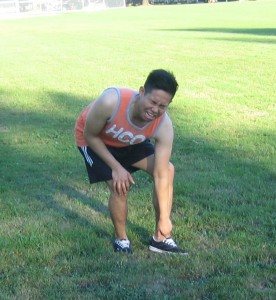Swollen ankles among the elderly is caused by the buildup of fluids in the tissues of the lower leg. Swelling of the area can result when consuming too much sodium, sitting for long periods of time and suffering from some underlying health conditions.
Buildup of fluids around the ankle is called pedal edema. This condition is usually painless but if it becomes severe, it can become uncomfortable. It can happen in one or both legs. Elderly people who are overweight are usually susceptible to develop pedal edema. This condition is classified into pitting and non-pitting edema. Pitting edema happens when an indentation remains in the swollen area while non-pitting edema has no indentation in the area.

Causes of swollen ankles
- Obesity
- Congestive heart failure
- Advanced age
- Deep vein thrombosis
- Kidney and liver disease
- Infection of the legs or hip
- Pelvic or lower body surgery
- Vascular problems that delays the return of blood to the heart
- Lymphatic insufficiency
Symptoms
- Stretch or shiny skin
- Swelling or puffiness of the tissue under the skin
- Skin retains a dimple after being pressed for a few seconds
- The area around the ankles becomes engorged with fluids and looks enlarged
- The palpated area feels tight
- The limbs can be affected by the swelling
If the condition is left untreated, it can result to difficulties in walking, stiffness of the area, severe painful swelling, stretched skin and itchiness. The swollen ankles become susceptible to infection, scarring between layers of tissue and lessened flow of blood. The elasticity of the arteries, veins, muscles and joints becomes reduced and there is a high risk of developing skin ulcers.
Treatment
- Avoid sitting for long periods of time. Perform some gentle exercises to increase the blood circulation and lessen the swelling. Take a short walk for at least 15-30 minutes several times every day to increase the blood circulation and lessen swelling.
- Elevate the affected area above the level of the heart for at least 30 minutes at 3-4 times every day. The swollen ankles can be raised on stacks of pillows to keep it elevated.
- Massage the swollen ankles by rubbing it in the natural direction of circulation of the fluid towards the heart.
- Wear a compression hose for the limbs to prevent accumulation of fluids in the area. Another alternative is using inflatable garments around the affected area to lessen the swelling. The pressure they exert can be controlled. Sequential gradient pump therapy can be connected to the inflatable garments to compress and decompress for proper fluid circulation in the area.
